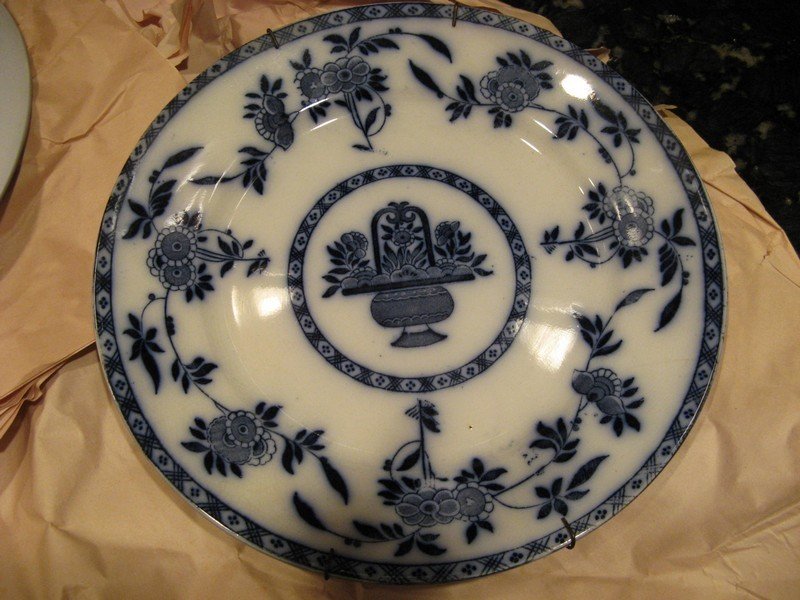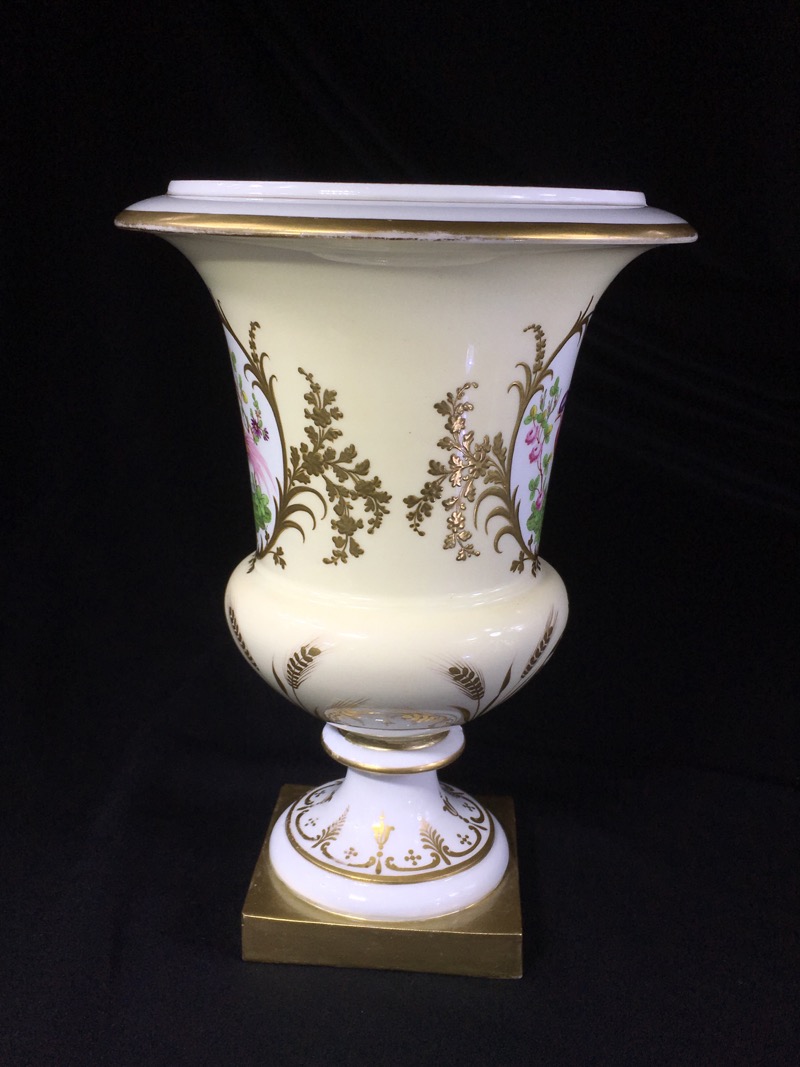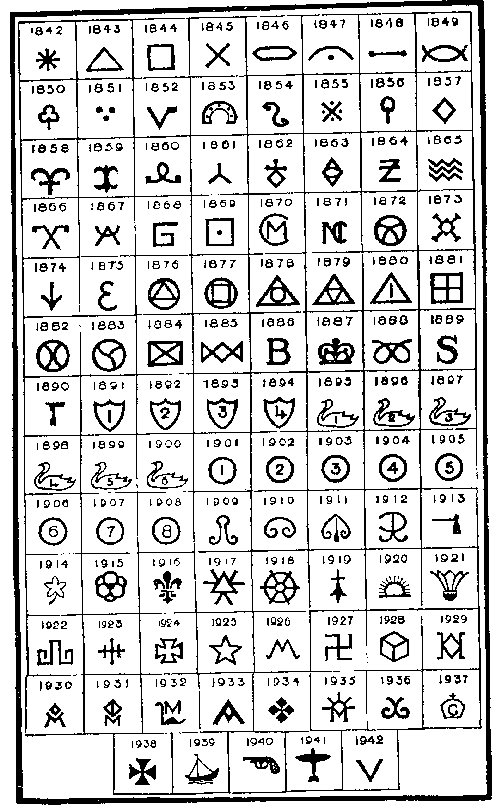
441 12 FLORAL MINTON CHINA PLATES Lot 441
Antique Minton Marks on Pottery and Porcelain : c1805 to 1806 - Mark in overglaze blue enamel only used with gilded pieces. Before 1805 pattern number is preceded by No., after 1805 pattern number is on its own.

MINTON PORCELAIN CUP AND SAUCER 1880 1900
View Antique Minton Marks.. In 1870, Minton's Art Pottery Studio was established in Kensington, London. The art studio was set up under the direction of the painter WS Coleman, in order to encourage both amateur and professional artists to decorate china and tiles for Minton. Although popular and influential, unfortunately the studio was.

Minton Delft Plates Mintons Antique Flow Blue White China from mercymaude on Ruby Lane
History 1793 to 1850 The firm began in 1793 when Thomas Minton (1765-1836) founded his pottery factory in Stoke-upon-Trent, Staffordshire, England as "Thomas Minton and Sons", producing earthenware. He formed a partnership, Minton & Poulson, c.1796, with Joseph Poulson who made bone china from c.1798 in his new near-by china pottery.

A PAIR OF MINTON PORCELAIN TURQUOISEGROUND VASES CIRCA 1870, IMPRESSED UPPERCASE MARKS, SHAPE
Maker 'MINTON' and date cypher for 1867. Majolica-makers marks - this is from a rare Minton Majolica tin-glaze plate in imitation of Renaissance Italian tin-glaze maiolica. Note the impressed marks almost obscured by glaze. Note also MINTON in manganese brown fine painted script on opaque white tin glaze. Minton was perhaps the most consistent.

Lot Detail Minton China (48) Pieces
Antique Minton Marks on Pottery and Porcelain : From c1842 Minton introduced a year cypher. A guide to dating antique Minton marks and dating Minton Porcelain including the full list of Minton year cyphers used by Minton over its 200 year history
.jpg)
A PAIR OF MINTON PORCELAIN BLACKGROUND VASES , DATE CYPHER FOR 1875, IMPRESSED UPPERCASE AND
Wedgwood Date Marks. Josiah Wedgwood started marking his production in about 1759, impressing his name into the underside of the pottery with printer's movable type. The resulting mark was often uneven and sometime arced. From 1769 until 1781, he adopted the familiar WEDGWOOD mark with the name impressed from a single slug.

Minton Delft Plates With 3 Marks Equaly Spaced On Back Artifact Collectors
Minton's was the only English china factory of the 19th century to employ a Sèvres technical process called pâte-sur-pâte (q.v.; painted decoration in white clay slip instead of enamel before glazing).Minton also produced Parian figures. The Minton factory was the most popular supply source in the 19th century of dinnerware made to order for embassies and for heads of state.

Minton porcelain urn, Worcester birds with ‘Nantgarw’ mark, c.1830 Moorabool Antiques Galleries
Other valuable ones include those that were used by important factories or workshops, such as the Minton company. Pottery marks can also be valuable if they date back to a specific period in history. For example, pottery marks from the Art Deco period are often quite valuable. And finally, pottery marks that are rare or unusual can also be.

Minton Fine Bone China Dinnerware Plus Serving Pieces including "Buckingham" EBTH
Established in 1793, Minton Pottery is an iconic British ceramics manufacturer with a storied legacy of producing fine bone china, earthenware, and porcelain items for over two centuries. Their wares have graced the tables of nobility and have been coveted by collectors worldwide.
Minton Majolica snail and acorn jug/pitcher (unusual form)
An Illustrated Guide to Minton Printed Pottery, 1796-1836. Geoffrey H. Priestman.. One reason for the book's focus on pattern identification is revealed in the chapter "Early Minton Factory Marks." Nonetheless, one wonders why Minton was so reluctant to link his name to his early transfer-printed wares, only inscribing a modest.

minton porcelain minton porcelain marks Empiretory
c.1870 ~ 1912 Minton did not changed its mark design for a long period. Main design - globe & Minton in the middle - continued more than 100 years. Used between 1912 to 1950. Branches added around globe and pattern name added below. Used After 1951. Globe is disappeared. -NOTE- Information above is gathered by myself and Surely can be wrong.
Minton (?) 'Floral Ribbon' serving plate Antiques Board
Doulton - Minton Marks This table lists marks used on Doulton, Royal Doulton, and Minton ceramics, the dates they were used, and the method of printing. To read this article — and over 25,000 more — try Kovels Membership FREE for 7 Days

Dating minton pottery marks Porcelain and Pottery Trade Marks. 20191122
Minton majolica marks are always impressed into the body and always found on the base or underside of the piece. Occasionally a thick glaze will obliterate part of the mark so it may not be seen but it is almost always there.

Minton pottery factory mark Stock Photo Alamy
1. Bone China 2. Fine China 3. Porcelain China How Is Minton China Made? What Are the Features of Minton China? Minton China Marks How to Care for Minton China? Where to Purchase Minton China? What Are the Most Popular Minton China Patterns? Frequently Asked Questions What is Minton China? What sets Minton China apart from other fine china brands?

MINTON ANTIQUE MAJOLICA POTTERY PINEAPPLE JUG 1873 eBay
Thomas Minton 1765-1836 Thomas Minton moved to Stoke in 1793 and opened his newly built factory in 1796 - he went on to become Spode's nearest rival. He made Minton ware famous - a cream-coloured and blue-printed earthenware majolica, bone china, and Parian porcelain; his factory was outstanding in the Victorian period for its "art" porcelains.

Antiques Atlas Minton Pottery Aesthetic Movement Bottle Vase 1872
Minton Mark c1850 Amherst Japan Paragon China Paris Porcelain Mark Bourdoir & Bloch Rosenthal Porcelain c1930 Royal Bonn Lyonais c1897 Royal Bonn Sarreguemines Mark France Wien Keramos Austrian c1930 Mayer & Sherratt c1906 to 1920 Wade Pottery Mark c1957 onwards Gerbing & Stephan G & St c1861 to 1900 Louis Majorelle Makers Mark